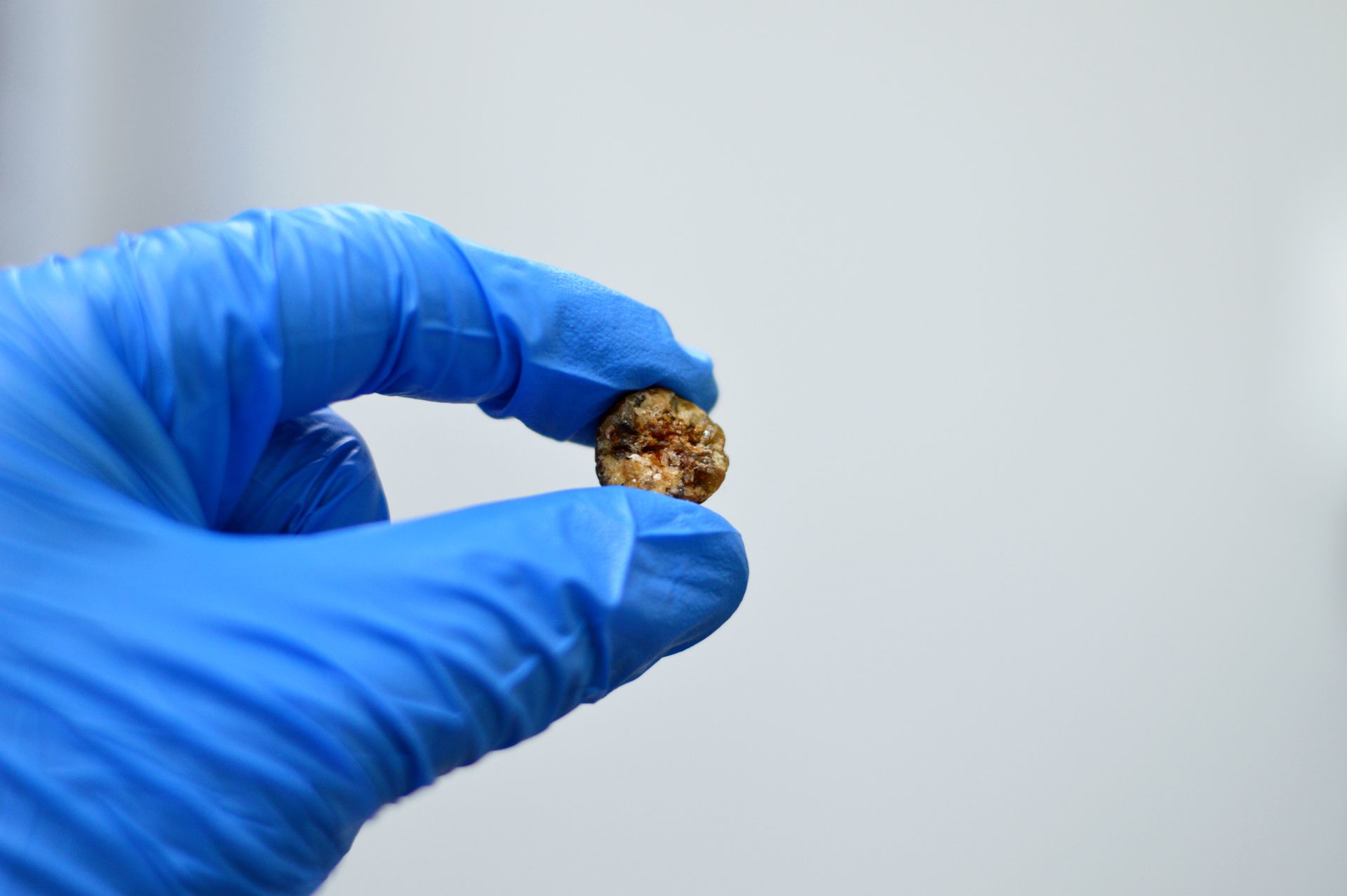Mount Elizabeth Novena Hospital #10-48/49
Gallstone Removal: Diagnosis and Surgical Options
For those living with gallstones, the pain can be debilitating, often striking suddenly with sharp, intense discomfort in the upper abdomen. This pain can last for hours, making simple daily activities difficult to manage. If left untreated, gallstones can sometimes lead to complications that require urgent surgical removal of the gallbladder.
This article will discuss gallstones, their risk factors, and when surgery is needed.
What Are Gallstones (Gallbladder Stones)?
Gallstones are solid crystallised matter that form in the gallbladder, a small organ just beneath the liver that stores bile. Bile helps the body digest fats. Gallstones form in various sizes, the smallest measuring like a grain of sand, and the largest as large as a golf ball. They can form if the components in the bile crystallise. These stones are commonly composed of cholesterol or bilirubin and may block bile flow from the gallbladder, leading to pain and inflammation.
Causes of Gallstones
Gallstones usually develop when there is an imbalance in the substances that make up bile. Key causes include:
- Excess cholesterol in bile: When bile has excessive cholesterol and not enough bile salts, cholesterol crystals form, leading to gallstones.
- Excess bilirubin: Liver conditions or infections can increase bilirubin production, which can contribute to gallstone formation.
- Incomplete gallbladder emptying: If the gallbladder doesn't empty fully, bile can concentrate, encouraging gallstone development.
What Are the Risk Factors for Gallstones?
Certain factors increase the likelihood of developing gallstones, including:
- Age: People over the age of 40 are at higher risk.
- Gender: Women are more likely to have gallstones than men, especially during pregnancy or while using birth control pills.
- Obesity: Excess body weight increases cholesterol levels in bile.
- Rapid weight loss: Quick weight loss can disrupt bile balance, raising the risk of gallstones.
- Diet: High-cholesterol,high-fat and low-fibre diets may contribute to gallstone formation.
- Family history: Genetics play a role; a family history of gallstones increases one's risk.
How Are Gallstones Diagnosed?
Gallstones are diagnosed using imaging techniques and physical examination, often following symptoms like abdominal pain, nausea, or bloating. Common diagnostic tools include:
- Ultrasound scan: The most commonly used method and remains the gold standard for confirming the presence of stones, which visualises stones in the gallbladder.
- CT scan: This imaging method provides a detailed view of the abdomen.
- MRI: Magnetic resonance cholangiopancreatography (MRCP) can produce high-quality bile ducts and gallbladder images.
Possible Complications of Untreated Gallstones
If untreated, gallstones can worsen and lead to serious complications, including:
Cholecystitis
Cholecystitis is an inflammation of the gallbladder. It is often caused by a gallstone blocking the cystic duct. Symptoms include severe pain, fever, and vomiting, which may require emergency treatment.
Pancreatitis
Gallstones that block the pancreatic duct can cause pancreatitis or inflammation of the pancreas. This condition can give rise to severe abdominal pain, nausea, and vomiting and may require hospitalisation.
Cholangitis
Cholangitis can occur if gallstones obstruct the bile ducts. It is a bacterial infection of the bile ducts and requires prompt treatment with antibiotics and sometimes surgery.
Gallstone Ileus
Gallstone ileus is a rare but severe complication that occurs when a large gallstone causes a bowel obstruction. It typically requires surgical intervention.
When Is Gallbladder Surgery Necessary?
Gallbladder surgery, or cholecystectomy, is often recommended if you have symptomatic gallstones that cause recurrent pain or complications. While some patients with small, asymptomatic stones may not need surgery, those with more severe symptoms or complications usually require gallbladder removal.
Gallbladder Removal Surgery Options
There are two types of gallbladder surgery to remove gallstones. These include:
- Laparoscopic gallbladder surgery (Laparoscopic cholecystectomy)
- Open surgery (Open cholecystectomy)
Laparoscopic Gallbladder Surgery
Laparoscopic surgery is a minimally invasive surgical technique for gallbladder removal, commonly used due to its shorter recovery time and less scarring. This is the current gold standard. Doctors only need small incisions in the abdomen and a laparoscope to remove the gallbladder. The procedure is also known as a keyhole surgery, and has a quicker recovery time.
Risks (Complications)
Like any surgery, laparoscopic gallbladder removal are associated with inherent surgical risks, such as infection, bleeding, and bile duct injuries. These risks are generally lower compared to open surgery.
Procedure
The surgeon makes 0.5cm to 1 cm incisions in the abdomen and inserts a laparoscope—a thin tube with a camera attached. Guided by the camera's view, the surgeon dissects around the gallbladder, removing its attachments from surrounding structures and extracts the gallbladder through one of the incisions.
Recovery Time
Most patients recover from laparoscopic surgery within one to two weeks. Hospital stays are typically brief, with some patients discharged on the same day.
Postoperative Care
Patients should rest and avoid heavy lifting for a few weeks post-surgery. A balanced diet low in fatty foods may help ease digestion without a gallbladder.
Cost
Laparoscopic gallbladder surgery is the current gold standard for gallstone disease and is only marginally more costly than open surgery due to the equipment and expertise required, but this varies based on factors like location and insurance coverage.
Open Gallbladder Surgery
If laparoscopic surgery isn't possible due to complications or previous surgeries, an open cholecystectomy may be performed. An open surgery involves making a larger incision in the abdomen to remove the gallbladder.
Risks (Complications)
Like any major surgery, open gallbladder surgery carries risks such as infection, bleeding, blood clots, and damage to surrounding organs. The risk of complications is higher than with laparoscopic surgery, as it involves more manipulation.
Procedure
The surgeon makes a single, larger incision of 4 to 6 inches in the upper right side of the abdomen to access the gallbladder and remove it. This procedure requires general anaesthesia and may take longer than laparoscopic surgery due to the complexity of the surgery.
Recovery Time
Patients typically need a hospital stay of 3-5 days, and full recovery takes 4 to 6 weeks. They are generally advised to avoid strenuous activities until full recovery.
Postoperative Care
Patients are usually given pain medications and encouraged to move around gently to avoid complications like blood clots. A special diet focusing on foods that are easy to digest may be recommended.
Cost
Open gallbladder surgery is generally less expensive than laparoscopic surgery due to the fewer specialised tools and techniques involved. However, because these are reserved for the more complicated presentations, the longer hospital stay and recovery time often increase overall costs.
Gallbladder Surgery in Singapore
Gallstone removal surgery is an effective treatment for those suffering from gallstones. Proper diagnosis and timely intervention can help prevent severe issues, ensuring a smoother recovery.
At
Colorectal Clinic Associates, our specialists provide gallbladder surgery tailored to patient needs. We use minimally invasive surgery whenever possible, including laparoscopic gallbladder removal, to reduce recovery time and postoperative pain. With a team of experienced surgeons, we prioritise patient comfort and successful outcomes.
Book a consultation for gallstone removal.






